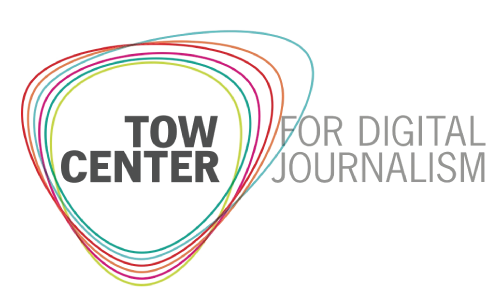Sign up for the daily CJR newsletter.
As the state of North Carolina was preparing for the decennial 2020 census, one of the paramount concerns involved “hard to reach” populations. This included people living in mountainous rural communities, who often have little or no access to broadband, as well as people with a first language other than English, and individuals who distrust public figures, often with good reason. In 2017, based on early discussions among nonprofits serving different communities in the state, a coalition called NC Counts was formed, with the sole purpose of ensuring a complete and accurate census in 2020. The importance of its mission, as its executive director, Stacey Carless, stated in the introduction to the post-census impact report, was clear: “census data informs decisions on vital services, infrastructure, and opportunities.… North Carolina’s 2020 census count will determine resource allocation for the next decade.”
With the help of federal funding and additional money from eight philanthropies, the NC Counts Coalition assembled 135 civil society organizations from across the state. Through collaboration with those organizations, they were able to find and reach people who are off the grid, because those people know and trust their local faith groups and healthcare workers. NC Counts was able to find and reach immigrant populations, because those populations know and trust the organizations that give them legal aid and housing assistance. They were able to find and reach military families, because those families rely on local civic organizations for help navigating schools and other services in their communities.
In other words, NC Counts “leveraged existing civic engagement infrastructure and grew greater long-term capacity to organize in support of initiatives that empower local communities,” as the impact report states. Since then, NC Counts—which remains in operation—has added nearly 100 new civil society organizations to its coalition.
The work around the 2020 census in North Carolina highlights the breadth and depth of local information and news networks, including in communities considered news deserts because they are not served by “capital J” journalism. But this does not mean that people don’t still need, and seek out, civic information. What can we learn from seeing the civic information landscape as inclusive of these community organizations?
Local information oceans?
The work of mapping local journalism provision at the 30,000-foot level is vital and provides valuable data about established local journalism outlets across the country. The annual State of Local News report, begun by Penny Abernathy in 2016, has focused attention on the plight of local newspapers that have served as the primary conveyors of civic information for decades. What is becoming clear is that the digital transformation has finally yielded the democratization of news that was predicted in the halcyon days of the internet; people’s critical information needs are now met by all manner of local organizations, largely through social media.
This research therefore seeks to supplement the 30,000-foot view with a 30-foot view, focused on all civic information providers: local news outlets, yes, but also the communications of schools, chambers of commerce, health institutions, and small businesses. In other words, the public-information-producing organizations that constitute the infrastructure of community information and news landscapes.
However, understanding information landscapes at the 30-foot view, especially from afar and for a country as vast as ours, requires collaboration. This is why for this new endeavor we are reaching out to journalism support organizations, funders, and civic media who are based in each state to partner in building what we’re calling the Local Information and News Registry. These organizations have deep connections to their communities and knowledge that cannot be replicated. Their input and ownership of the registry is crucial for its success.
This is by no means a revelatory approach. Organizations such as Listening Post Collective at Internews have been following a similar line of thinking since 2013; Democracy Fund’s 2017 analysis of North Carolina’s information ecosystem posed the thought experiment: “instead of asking how do we save traditional models of local news, we ask about ways of strengthening people’s access to information that is central to a healthy democracy. Instead of asking about the health of any one organization, we examine the robustness of the relationships between them.” More recently, a team of civic information practitioners called for a pivot from a local-news-ecosystem lens to a civic-media-system lens, which includes exactly the types of organizations being discussed here.
This is definitely not to say that local journalists are no longer needed. One publisher I spoke with recently from Kingston, New York, suggested that the entire framing of an area as a “news desert” obscures reality; instead, he said, we should be thinking of “information oceans,” in which people are awash and need journalists as lifeboats and beacons, lifting them above the noise and pointing them in the direction of factual and useful information.
This way of seeing has family ties to another recent turn, toward collaborative journalism—especially cross-field collaboration—where journalism organizations partner with nonprofits and other civil society organizations (CSOs) both to share scarce resources and to maximize reach and impact. North Carolina’s Border Belt Independent, a nonprofit news outlet, was born out of a chance conversation between its publisher, Les High, and a program officer at the Kate B. Reynolds Charitable Trust, which to that point had funded only organizations related to health and wellness. High was hosting a forum to showcase a series they had done on the opioid epidemic, and as the two talked afterward they realized that they could have a greater impact together. In other words, High realized that by partnering with the health organizations fighting the epidemic he’d have much richer journalism, while the funder realized that bringing a news organization into the fold would amplify the work being done by the health workers—and hopefully lead to greater impact.
The skills and expertise of journalists are crucial for telling the stories of the good work being done in communities, and getting those stories into the halls of power. Likewise, civil society organizations have roots and have built trust; by working together, journalists are better informed and their content is more authentically reflective of the communities they serve.
North Carolina as jumping-off point
One of the reasons I chose to begin what will eventually be a nationwide effort in North Carolina is that the state is home to some of the most innovative and successful journalism support efforts in the country (other such states include New Jersey and Colorado). In addition, its 100 counties contain tremendous variety in terms of terrain and demographics, two variables known to affect people’s access to local news and all of the services and affordances that are associated with it.
North Carolina partners already on board include NC Local News Workshop, the Center for Innovation and Sustainability in Local Media (CISLM), and the North Carolina Local News Lab Fund. In addition, we have received valuable input and assistance from Carolina Demography, the NC Counts Coalition, Tiny News Collective, Media Impact Funders, the Border Belt Independent, Metcalf Institute, and the Civic Information Index.
There are nearly 200 local news outlets operating in North Carolina, according to Medill’s 2024 State of Local News report. Unsurprisingly, they are not distributed equally across the state. Nine of North Carolina’s 100 counties have zero outlets, according to the report; the majority (N=52) have only one. However, there are a handful of counties that have seven or more, while Wake County (home to Raleigh) has 13 and Mecklenburg County (home to Charlotte) has 22. It should come as no surprise that Wake and Mecklenburg also have the highest population densities in the state, as research on local news provision has shown that more densely populated areas have characteristics—a strong business base, a higher concentration of income—that can sustain journalism.
In terms of the civil society organizations that supplement—and increasingly stand in for—local journalism, we have so far identified 257 CSOs operating in North Carolina (the 235 that make up the NC Counts Coalition plus the grantees of the NC Local News Lab Fund; some overlap) and have begun gathering data about their operations. The pattern in terms of where these organizations are based loosely follows the pattern for local journalism described above, but with some important differences. For example, Wake and Mecklenburg make up two of the top three counties in terms of the number of CSOs based there, with 49 and 23 respectively (Durham has 31). But for many counties that have only one news outlet, or none at all, there are several civil society organizations. This follows from the fact that many of the CSOs in our sample provide relief and assistance to struggling and marginalized populations—the “hard to reach” in any number of ways. In those places, these organizations are crucial information providers.
For example, the Facebook page for Henderson County—which has three news outlets and 42 CSOs, according to its Chamber of Commerce—was a lifeline for survivors of Hurricane Helene; on December 13 it issued an urgent call for volunteers to help out at the Henderson County Warehouse, moving pallets of donated goods and equipment, sorting, and helping with the paperwork for orders from local nonprofits. “Your assistance is crucial in ensuring that supplies reach those in need,” the post read. “No prior experience is necessary—just a willingness to help and a heart for our community.” The post received 32 reactions, five comments, and 141 shares.
The Henderson County Facebook page is connected to hundreds of other local organizations, either by following their pages or being followed by them. Subsequent phases of this research will involve identifying the major players in these local information and news landscapes, and uncovering patterns in how information is originated and distributed, as well as the level of engagement by people in these communities.
One other finding from our early analysis of this sample of North Carolina civil society organizations is that the number of CSOs serving a community maps very closely onto the number of households with access to broadband. Again, not a huge surprise, but the data show what appears to be a “magic number” in terms of both the presence of CSOs as well as a marked increase in the likelihood of having at least one local news outlet: 10,000. In other words, the 65 counties that have 10,000 or more households with broadband are much more likely to be served by both civil society organizations and local news outlets.
Going forward
To what extent are CSOs the “new” local information producers? To what degree are audiences interacting with CSOs on social media? Where it exists, what is the role of local journalism in a reimagined local information landscape? These are questions that will be answered by this research as it goes forward. We will continue to build out our knowledge of North Carolina’s information and news landscape, adding local partners and identifying communication networks, while at the same time beginning work on other states. We are in the process of building a public-facing website that will house the registry and make this data available to all.
In 2023 NC Local News Lab Fund director Lizzy Hazeltine wrote a post highlighting the work of El Centro Hispano, one of their grantees: “We have a wide-open opportunity to weave community-based organizations into relationships with community-centered media of all types. This is what makes up the robust civic infrastructure of any community: newsrooms, community organizations, schools, libraries, and others all have a part to play in ensuring that information is shared widely.” It feels like the time has come for a broader acceptance of the idea that local news landscapes include many more voices than just local journalists, with all of the challenge and opportunity this implies.
The Local Information and News Registry that we are building at the Tow Center for Digital Journalism aims to bring all the information that people and organizations need to navigate this reality into one place; it will provide an infrastructure where community members, journalists, policymakers, and civil society organizations can look to understand a local landscape in detail, find information players they may not already be aware of, and, eventually, contribute themselves. By collaborating with partners like the NC Local News Lab Fund, who know their ecosystems intimately, we will provide resources for everyone to navigate uncharted waters.
Tow researcher Aisvarya Chandrasekar contributed to this article.
Has America ever needed a media defender more than now? Help us by joining CJR today.










